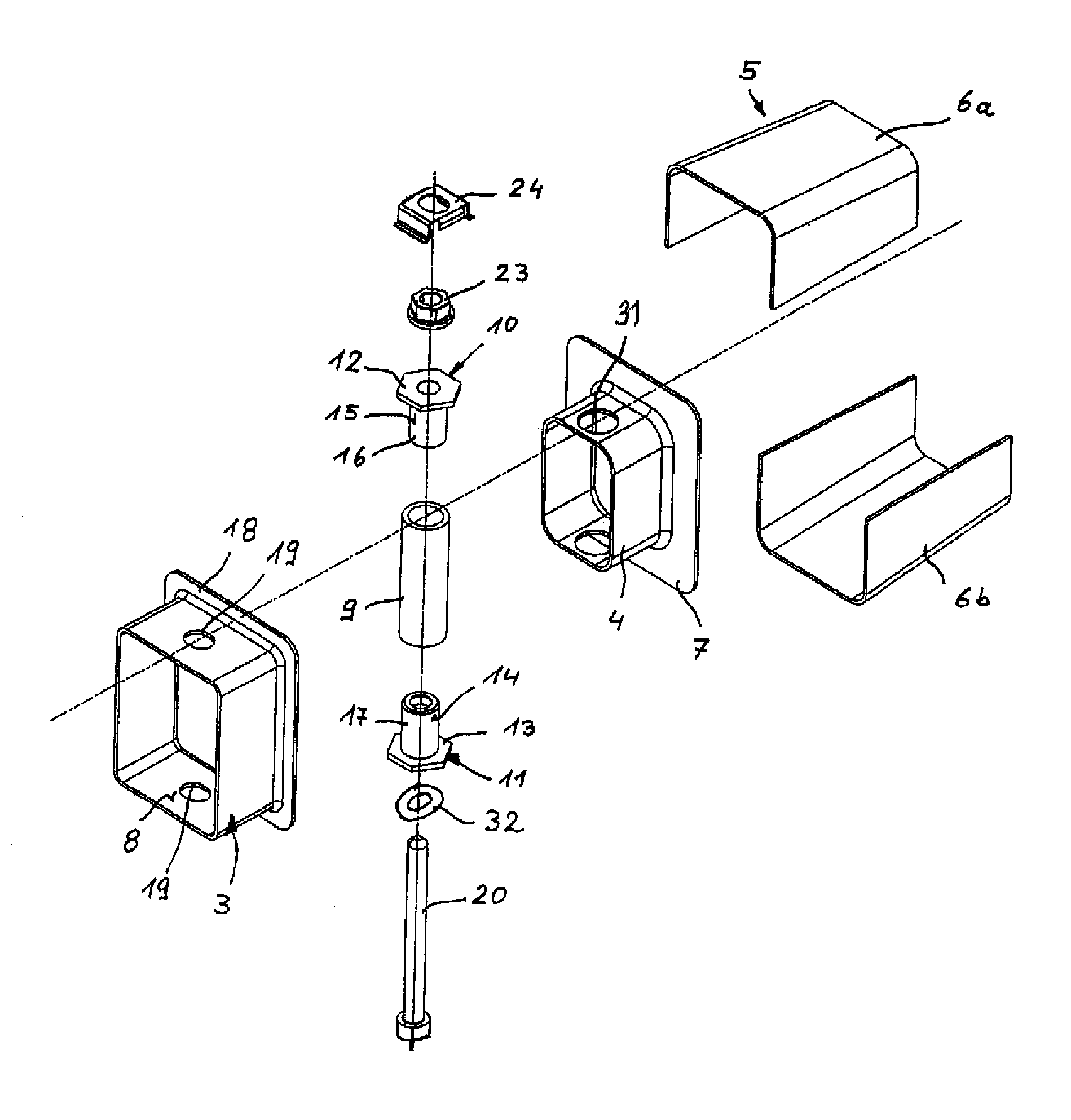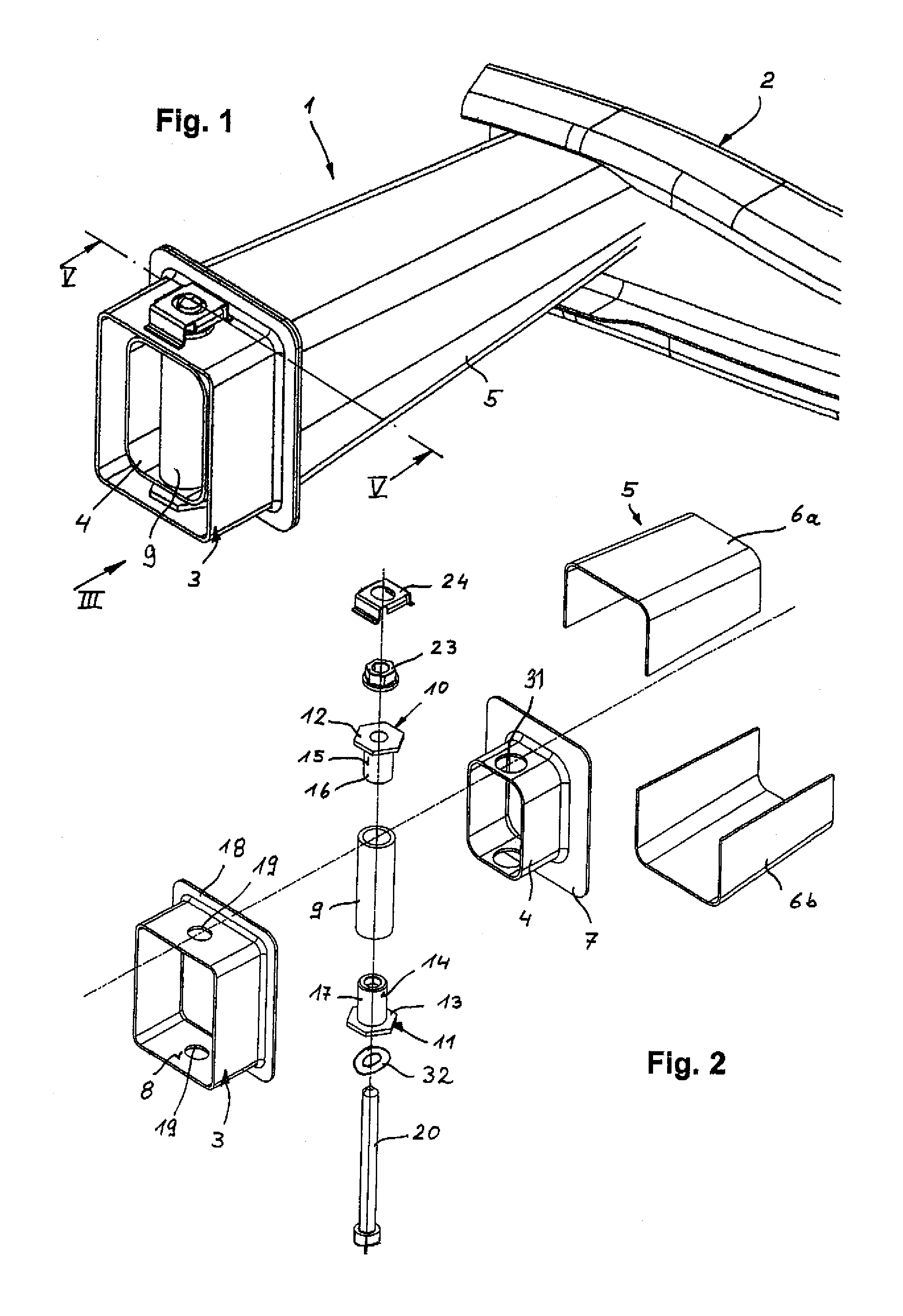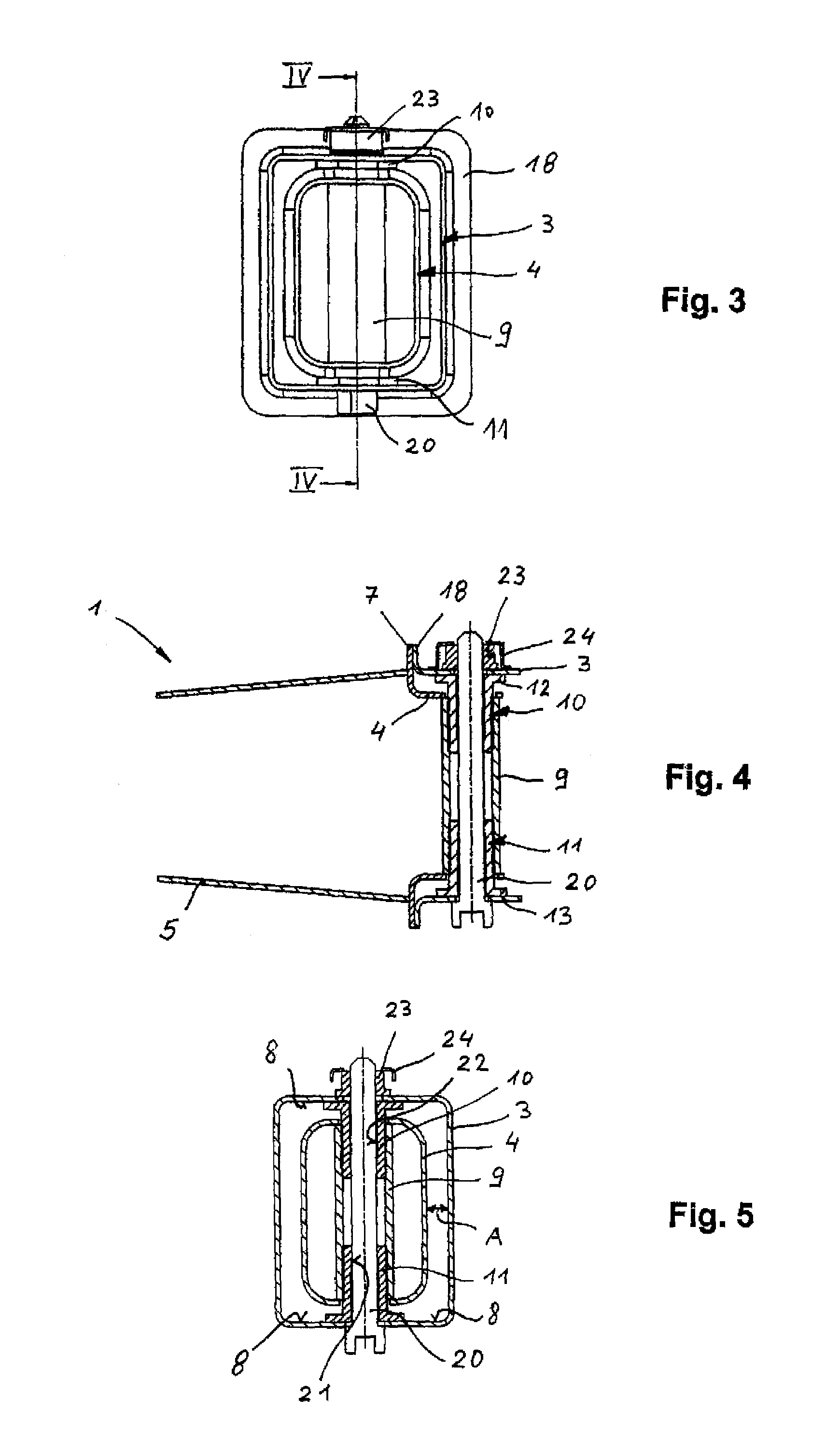Crash box
a box and screw technology, applied in the field of crash boxes, can solve the problems of ineffective non-rotatable connection between the respective rotary catch and the screw bolt, and the inability to rotate the tolerance compensating bolt, etc., and achieve the effects of reducing the overall weight of the crash box, reducing the number of screw elements, and facilitating assembly
- Summary
- Abstract
- Description
- Claims
- Application Information
AI Technical Summary
Benefits of technology
Problems solved by technology
Method used
Image
Examples
Embodiment Construction
[0030]Throughout all the Figures, same or corresponding elements are generally indicated by same reference numerals. These depicted embodiments are to be understood as illustrative of the invention and not as limiting in any way. It should also be understood that the drawings are not necessarily to scale and that the embodiments are sometimes illustrated by graphic symbols, phantom lines, diagrammatic representations and fragmentary views. In certain instances, details which are not necessary for an understanding of the present invention or which render other details difficult to perceive may have been omitted.
[0031]Turning now to the drawing, and in particular to FIG. 1, there is shown a perspective illustration of one embodiment of a crash box according to the present invention, generally designated by reference numeral 1 and intended for connection to a bumper cross member 2 and a longitudinal member 3 of an unillustrated motor vehicle. The crash box 1 includes two parts, namely ...
PUM
 Login to View More
Login to View More Abstract
Description
Claims
Application Information
 Login to View More
Login to View More - R&D
- Intellectual Property
- Life Sciences
- Materials
- Tech Scout
- Unparalleled Data Quality
- Higher Quality Content
- 60% Fewer Hallucinations
Browse by: Latest US Patents, China's latest patents, Technical Efficacy Thesaurus, Application Domain, Technology Topic, Popular Technical Reports.
© 2025 PatSnap. All rights reserved.Legal|Privacy policy|Modern Slavery Act Transparency Statement|Sitemap|About US| Contact US: help@patsnap.com



